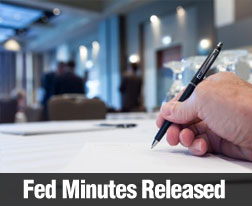 Last week’s economic releases included several reports related to housing. The Wells Fargo/ NAHB Housing Market Index achieved its highest reading in nearly 10 years. Housing Starts dipped in August and Building Permits issued in August exceeded July expectations. The week’s big news was actually no news. The Fed’s Federal Open Market Committee decided not to raise interest rates. Fed Chair Janet Yellen followed up on the FOMC statement with a press conference and said that the Fed is not yet ready to raise rates, but that a majority of FOMC members are prepared to raise rates before year-end.
Last week’s economic releases included several reports related to housing. The Wells Fargo/ NAHB Housing Market Index achieved its highest reading in nearly 10 years. Housing Starts dipped in August and Building Permits issued in August exceeded July expectations. The week’s big news was actually no news. The Fed’s Federal Open Market Committee decided not to raise interest rates. Fed Chair Janet Yellen followed up on the FOMC statement with a press conference and said that the Fed is not yet ready to raise rates, but that a majority of FOMC members are prepared to raise rates before year-end.
Inflation Rate Remains Well Below Fed Benchmark
The Federal Reserve has set a goal of reaching an inflation rate of 2.00 percent as one of several considerations for raising the target federal funds rate that currently stands at 0.00 percent to 0.250 percent. The Consumer Price Index for August fell from July’s reading of 0.10 percent to -0.10 percent in August. Lower prices were driven by lower fuel costs. The dip in consumer costs was the first since January.
The Core Consumer Price Index, which excludes volatile food and energy sectors, was unchanged at 0.10 percent in August, which matches analyst expectations and July’s reading.
NAHB: Home Builder Confidence Hits Highest Level in Nearly 10 Years
The Wells Fargo/NAHB Housing Market Index reached its highest reading since November 2005 with a one-point increase to a reading of 62 in September. Readings over 50 indicate that a majority of builders are confident about housing market conditions. September’s reading was the highest since November 2005, when the NAHB Housing Market Index achieved a reading of 68.
Housing Starts Lower, But Building Permits Rise
The Commerce Department reported that August housing starts fell to a seasonally-adjusted annual reading of 1.13 million starts against projections of 1.16 million starts and 1.16 million housing starts in July. Residential building permits were higher in August with a reading of 1.17 permits issued for residential construction and 1/13 million permits issued in July.
Mortgage Rates Rise
Freddie Mac reported that mortgage rates rose across the board last week. The rate for a 30-year fixed rate mortgage rose by one basis point to 3.91 percent. The average rate for a 15-year mortgage also rose by one basis point to 3.11 percent and the average rate for a 5/1 adjustable rate mortgage also rose by one basis point to 2.92 percent. Discount points averaged 0.60 got 30-year fixed rate mortgages, 0.70 percent for 15-year mortgages and 0.50 percent for a 5/1 adjustable rate mortgage.
What’s Ahead
Next week’s scheduled economic news includes reports on new and existing home sales, FHFA’s House Price Index, along with regularly scheduled weekly reports on new jobless claims and mortgage rates.

 The National Association of Home Builders (NAHB) / Wells Fargo Housing Market Index reported that home builder confidence rose by one point to a reading of 62 for September. This was the highest reading since November 2005, when the NAHB reported a reading of 68 for home builder confidence. Any reading above 50 indicates that more builders are confident about housing market conditions than those who are not.
The National Association of Home Builders (NAHB) / Wells Fargo Housing Market Index reported that home builder confidence rose by one point to a reading of 62 for September. This was the highest reading since November 2005, when the NAHB reported a reading of 68 for home builder confidence. Any reading above 50 indicates that more builders are confident about housing market conditions than those who are not. Buying a new home is an exciting time, but excitement can easily turn to stress if there isn’t enough money to pay the monthly mortgage bill. The added expense can take some time to get used to, but there are ways to make the payments easier, especially in those first few months when money is the tightest.
Buying a new home is an exciting time, but excitement can easily turn to stress if there isn’t enough money to pay the monthly mortgage bill. The added expense can take some time to get used to, but there are ways to make the payments easier, especially in those first few months when money is the tightest. It is common for those who are interested in buying real estate in the near future to tune into news stories about the real estate market, and many may have heard that there is speculation about a real estate bubble that may pop soon. While this gloomy outlook on the real estate market can strike fear in some hearts and may deter a purchase until a later date, the fact is that this is an excellent time to purchase property. In fact, there are three good reasons why potential buyers may want to start moving forward with their buying plans soon.
It is common for those who are interested in buying real estate in the near future to tune into news stories about the real estate market, and many may have heard that there is speculation about a real estate bubble that may pop soon. While this gloomy outlook on the real estate market can strike fear in some hearts and may deter a purchase until a later date, the fact is that this is an excellent time to purchase property. In fact, there are three good reasons why potential buyers may want to start moving forward with their buying plans soon. It’s amazing that in a year with extremely low mortgage rates being reported around the country, closing costs are up by as much as 6% from the previous year. Part of the reason for this is that the stricter regulations on loans have increased the costs to banks, and they always find a way to pass on new costs to the consumer.
It’s amazing that in a year with extremely low mortgage rates being reported around the country, closing costs are up by as much as 6% from the previous year. Part of the reason for this is that the stricter regulations on loans have increased the costs to banks, and they always find a way to pass on new costs to the consumer.